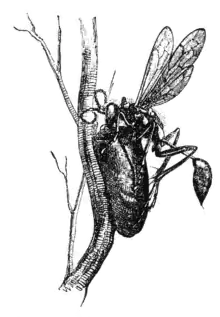Hieronymus Bock
Hieronymus Bock (Latinised Hieronymus Tragus; c. 1498 – 21 February 1554) was a German botanist, physician, and Lutheran minister who began the transition from medieval botany to the modern scientific worldview by arranging plants by their relation or resemblance. The standard author abbreviation H.Bock is used to indicate this person as the author when citing a botanical name.[1]
Hieronymus Bock | |
|---|---|
.jpg.webp) | |
| Born | 1497/98 |
| Died | 21 February 1554 |
| Spouse | Eva Victor |
| Church | Lutheran |
Life
The details of his life are unclear. In 1519 he inscribed at the university of Heidelberg. He married Eva Victor in 1523, and was schoolteacher in Zweibrücken for nine years. He became the prince's physician and caretaker of the kitchen garden of the count palatine and in 1533 received a life-time position as a Lutheran minister in nearby Hornbach where he stayed up to his death in 1554.
His surname was translated into Latin as Tragus; Bock is German for "male goat," while τράγος (tragos) is Ancient Greek for the same. The first edition of his Kreutterbuch (literally "plant book") appeared in 1539 unillustrated;[2] his stated objectives were to describe German plants, including their names, characteristics, and medical uses. Instead of following Dioscorides as was traditional, he developed his own system to classify 700 plants. Bock apparently traveled widely through the German region observing the plants for himself, since he includes ecological and distributional observations.
His 1546 Kreutterbuch ("herbal") was illustrated by the artist David Kandel.
In the wine world, Bock is noted for having the first documented use of the modern word Riesling in 1552 when it was mentioned in his Latin herbal.[3] Bock's description of oak apples is noted in the entomologists data base.[4]
The grass genus Tragus (by Haller in 1768) and the spurge genera of Tragia (Plum. ex L. in 1753) and Tragiella (by Pax & K.Hoffm. in 1919) are all named after him.[5]
Works
- New Kreuterbuch von Underscheidt, Würckung und Namen der Kreuter, so in teutschen Landen wachsen. Straßburg, 1546 Digital edition by the University and State Library Düsseldorf
Footnotes
- International Plant Names Index. H.Bock.
- Brian W. Ogilvie (15 September 2008). The Science of Describing: Natural History in Renaissance Europe. University of Chicago Press. pp. 36–. ISBN 978-0-226-62086-2.
- Oz Clarke The Encyclopedia of Grapes Websters International Publishers 2001, pg 192 ISBN 0-15-100714-4
- "Groll, E. K. Biografien der Entomologen der Welt : Datenbank".
- Burkhardt, Lotte (2022). Eine Enzyklopädie zu eponymischen Pflanzennamen [Encyclopedia of eponymic plant names] (pdf) (in German). Berlin: Botanic Garden and Botanical Museum, Freie Universität Berlin. doi:10.3372/epolist2022. ISBN 978-3-946292-41-8. Retrieved January 27, 2022.
References
- Christoph, Hans Gerhard " Hieronymus Bock Leben und Werk " Nihil parvum – nihil contemnendum Hrsg. Hornbach Historie
- Christoph, Hans Gerhard " Von alten Kräutern und neuen Gärten " published Die Pfalz page 12-13
- Christoph, Hans Gerhard " Zum Nutzen der Kranken " exhibition Augsburg, May 2012
- Adolf Engler (1875), "Bock, Hieronymus", Allgemeine Deutsche Biographie (ADB) (in German), vol. 2, Leipzig: Duncker & Humblot, p. 766
- Hermann Ziegenspeck (1955), "Bock (Tragus), Hieronymus", Neue Deutsche Biographie (in German), vol. 2, Berlin: Duncker & Humblot, p. 343
- Isely, Duane (2002). One Hundred and One Botanists. West Lafayette, Indiana: Purdue University Press. pp. 23–25. ISBN 978-1-55753-283-1. OCLC 947193619. Retrieved 2018-11-27.
- Hoffmann, D., Laitko, H.and Müller-Wille, S. (Hrsg.); Jahn, Ilse 2003: Lexikon der bedeutenden Naturwissenschaftler. In drei Bänden. - Heidelberg, Berlin – Spektrum Akademischer Verlag 1 (A-E) : 1–497, zahlr. Fig.
